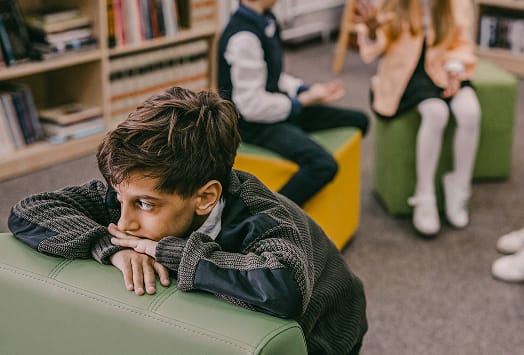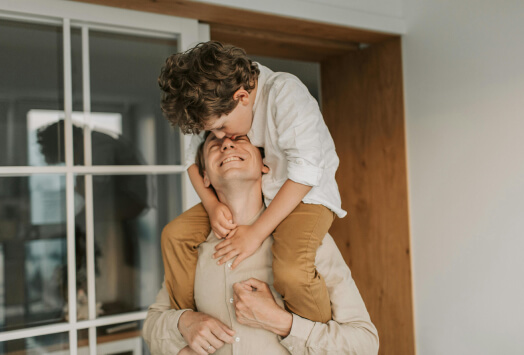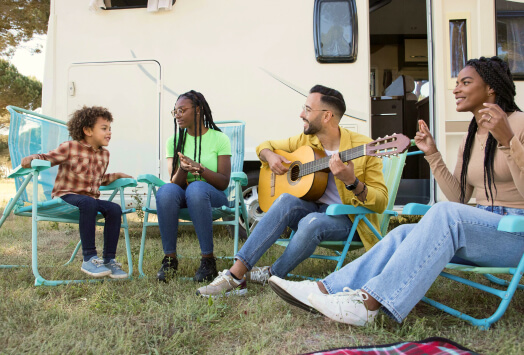Updated in 2024
With elections around the corner, voting season is very much in full swing. As you exercise one of your most important rights as a citizen, you may find yourself in a position where you’ll want to explain the process to your children. But wait… it’s pretty confusing to explain. Representative democracy? What is voting? How do elections even work? What are we even voting on? Did I leave the bathroom light on? Oh, got sidetracked at the end there. You get the idea.
As we begin to talk to our little ones, we've been wondering the best way to explain these processes. The goal is to take these deceptively complicated concepts and package them in a format that’s understandable for your child. For each section, we’ll start with a simple explanation, then move on to a short exercise you can do with your little ones. We suggest you practice with stuffed animals, LEGO, or any toy your child has a lot of!

What is government?
Explain to them that: A government is a small group of people that create rules to keep a larger group of people safe and happy.
Now practice: Imagine that of the 20 stuffed animals you have, three of them make the rules for everyone. The three stuffed animals look out for the rest of the animals, making rules to keep everyone happy and organized. They’re the leaders of all the stuffed animals!

What is democracy?
Explain to them that: A democracy is when a group of people are led by an individual that the people choose to put there. Therefore, a democracy is a government run by the people. Every person has a say in how the government is run. This means that their classmates, their teachers, and anyone they see around them, all possess a right to have their voices heard!
Now practice: The one stuffed animal that makes the rules is in power because the rest of them decided they should represent them! Pretend that there is only one rule-maker position available, and three of the stuffed animals want the job! This means that all of the stuffed animals must decide together who the one leader will be.
This leads us to our next topic of voting!

What is voting?
Explain to them that: Voting is how a democracy works. Individual people vote for the person they want representing them and the rules they want or don’t want. You call the people that we vote for “candidates”. If more people agree on who or what they want, that is called a “majority”.
Now practice: To decide which stuffed animal gets the job, all 20 of the animals must put it to a vote. The great thing about democracy is that everyone is entitled to a vote. So if you have 20 stuffed animals, each one has one vote. Of the three animals that want to be the leaders, only one will be able to get the job. Of the three stuffed animals, we need to find out which one of them will get the most votes.
And that’s when we have an election!

What is an election?
Explain to them that: Voting doesn’t happen all the time! An election is an event where everyone votes for the people and rules they want. With most elections, the person or cause that receives the most votes wins. Typically, on election days you go to cast your vote at places like libraries, schools, and other community centers.
Now practice: It’s Election Day! All of the stuffed animals are going to submit a vote one at a time at their local community center (aka, the living room). Only 18 of the animals decided to vote though. Two of the animals didn’t feel like voting. Because two of the animals didn’t vote, they don’t get a say in which animal is elected! Once each animal has submitted their vote, you count up the results. (And yes, you’re allowed to vote for yourself).
The results are in! Of the three animal candidates running:
- Candidate one received six (6) votes
- Candidate two received eight (8) votes
- Candidate three received four (4) votes
Because candidate two received the most votes, they win the election!
There are two important things to break down here for your children:
- Sometimes what you vote for doesn’t get selected or win the election. And at the end of the day, that’s one of the cornerstones of democracy. It’s important to drive home the point to your kids that if what you vote for doesn’t win, they shouldn’t be discouraged by the process.
- As we saw with the two animals that decided not to take part in the election, when you don’t vote you give up the chance to be heard. Whenever you have the opportunity to vote, it should be exercised. Even if you don’t win, or get what you want with each election, there’s always a better chance for your voice to be heard when you participate in the democratic process.

















